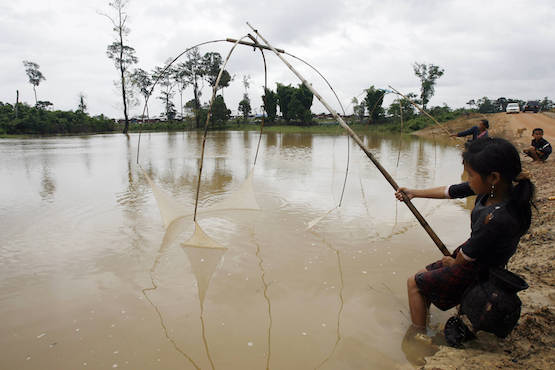How the Church is helping to protect the environment
Church groups began to keenly involve themselves in environmental activities after Pope Francis in his May 2015 encyclical Laudato si stressed the need for greater participation in projects aimed at protecting the environment.
Jun 22, 2018

Church groups began to keenly involve themselves in environmental activities after Pope Francis in his May 2015 encyclical Laudato si stressed the need for greater participation in projects aimed at protecting the environment.
The letter said the post-industrial period “may well be remembered as one of the most irresponsible in history” and underlined the urgency to change paths to end the over-exploitation of nature just so a minority can enjoy certain luxuries.
Since 2017, Caritas India has been working on the ground in the states of Assam, Mizoram, Manipur, Bihar, Uttar Pradesh, West Bengal, Jammu and Kashmir, and Gujarat to make people better aware of how they can reduce risks when nature turns on them, said Bag.
The agency also helps provide relief efforts to victims of natural disasters including floods, he added.
In 2017 the agency reached out to 350,495 people covering 78,382 households in 28 districts in flood-hit states.
Following those rescue and rehabilitation efforts, the agency started offering disaster risk training to people in key states whose towns and villages have been devastated by natural disasters.
Government experts like Gauba said India is flood-prone because the bulk of precipitation occurs in a short space of time, but added that the resulting losses can be reduced if villagers are better prepared.
Over 1,000 people died and 30 million more were affected in the June-August monsoon of last year when flash floods and landslides battered Assam, Manipur, Bihar, West Bengal, Gujarat, Odisha, Uttar Pradesh, Jharkhand, Mizoram, Arunachal Pradesh, and Nagaland.
Assam and Bihar were the worst hit as some 17 million in 21 districts were affected. More than 700 people lost their lives in these two states alone.
According to Jahangir Ahmad, a research scholar at the University of Kashmir, about 60 per cent of the landmass in India is prone to earthquakes of various intensity and over 40 million hectares in the country are prone to floods.
“About eight per cent of the total land area in India is prone to cyclones and 68 per cent is susceptible to drought,” he said.
“This merits serious concern, and measures are needed to get people prepared for these kind of incidents. Precious lives have been lost in the past because no one was ready in advance,” he added.
Birju Ram remembers vividly how flash floods on Aug. 18 of last year washed away his single-story house at Northern Bihar’s Purnia district. Along with the house, Ram also lost his cattle and household goods.
A daily labourer and father of three, Ram also has to care for his ailing mother. He said he was at his wit’s end before Caritas came to the rescue.
The group also conducts regular health check-ups and “trains us about the do’s and don’ts during a natural disaster,” he said. -- ucanews.com(used with permission)







Total Comments:0